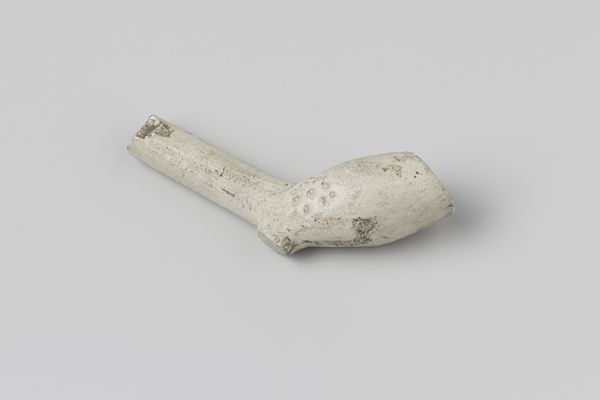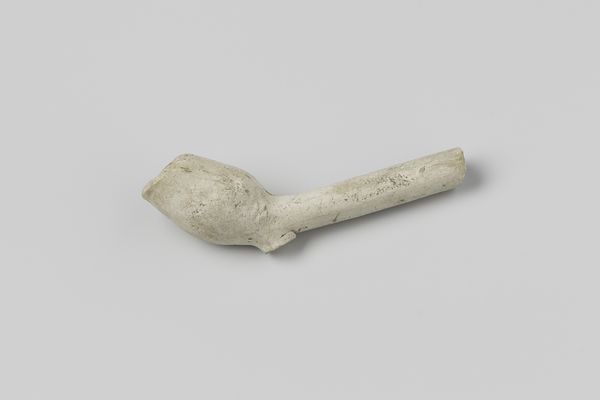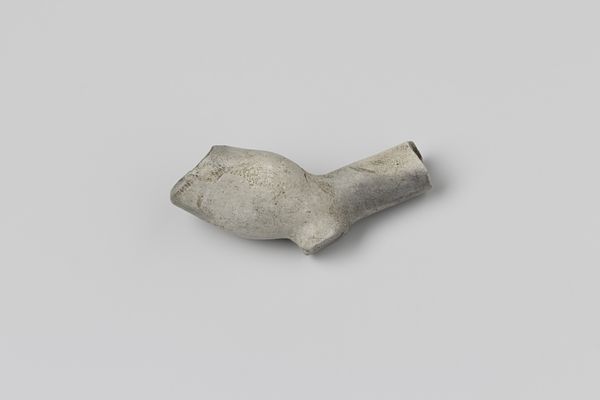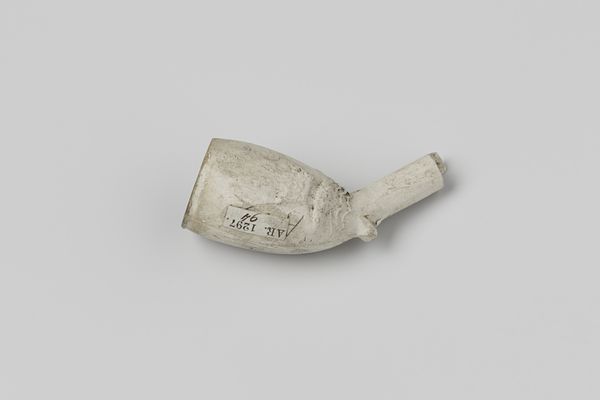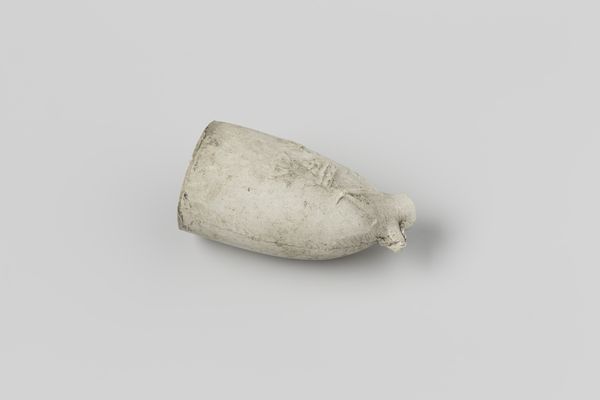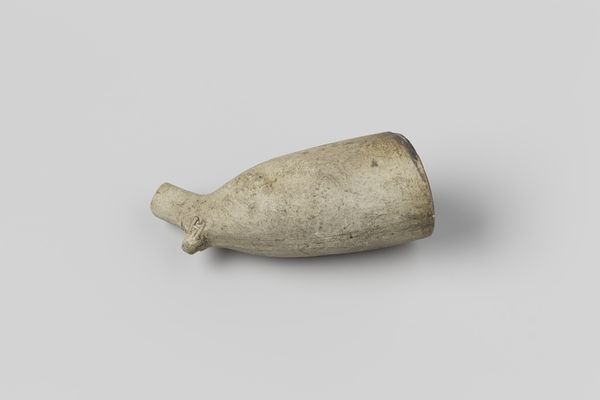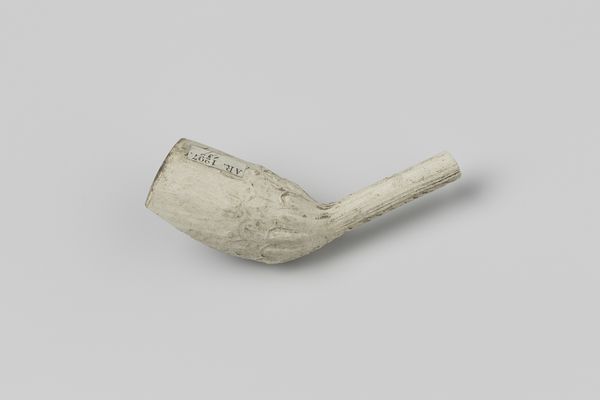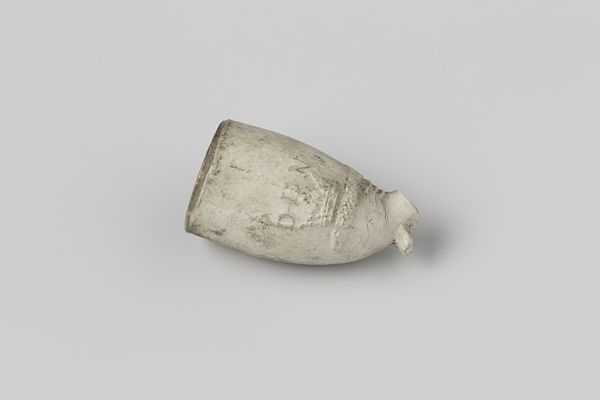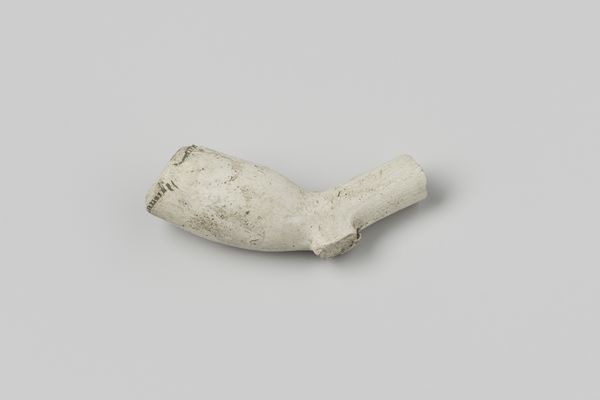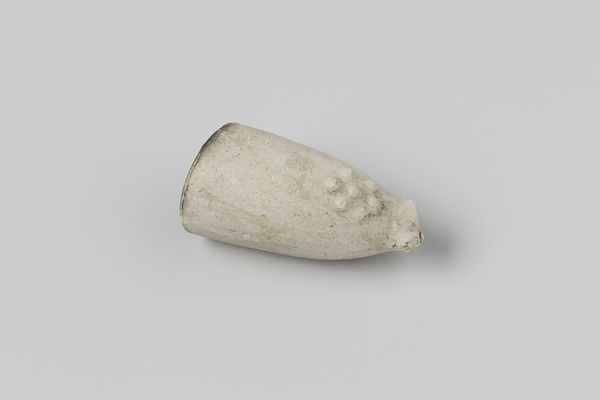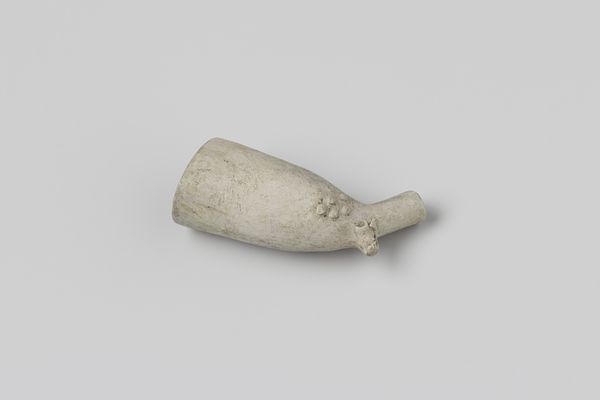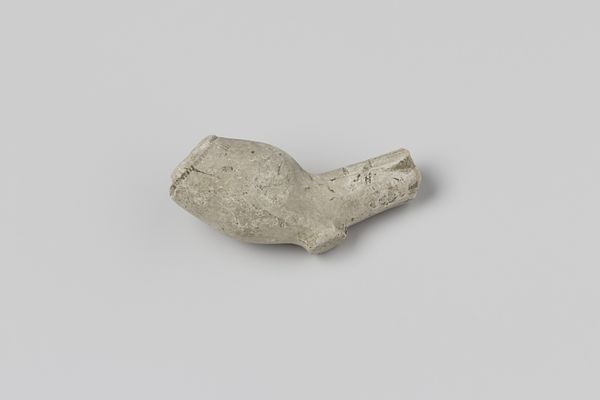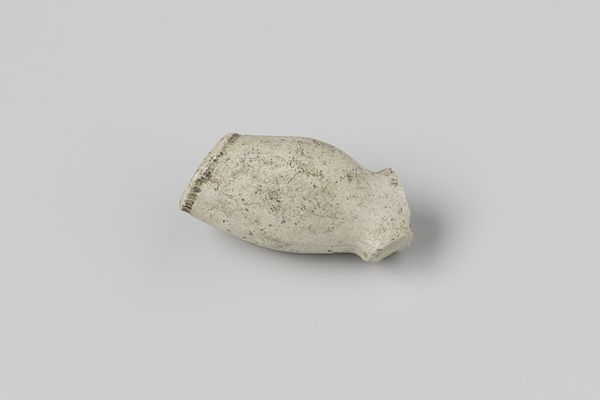
ceramic, earthenware
#
dutch-golden-age
#
ceramic
#
earthenware
Dimensions: length 3.1 cm, width 2.0 cm, length 6.5 cm
Copyright: Rijks Museum: Open Domain
Curator: It’s ghostly. Like a relic unearthed from centuries ago, tinged with melancholy and impermanence. Editor: And that’s because in a way, it is. We are looking at a "Fragment tabakspijp", a tobacco pipe fragment made of earthenware dating back to the Dutch Golden Age, sometime between 1635 and 1650. It comes to us from an anonymous maker. Curator: Even in this fragmented state, the form remains elegant. These pipes became such potent emblems. Smoking was much more than just recreation, it represented something deeper… communal ties, expanding trade networks, exploration. All captured in this small, fragile object. Editor: Absolutely. The ubiquity of these pipes really speaks volumes. From taverns to trading posts, this anonymous artifact connects to much larger socio-economic shifts of the period, where tobacco transformed social rituals, commercial endeavors and colonial legacies, no doubt. Curator: I’m particularly drawn to the texture. That fine, almost porous earthenware, suggests use, erosion, time… The history practically etched onto its surface like ghostly stories waiting to be reread. How does one experience history while also reshaping culture through habit and commerce? Fascinating. Editor: These clay pipes, once disposable, really challenge traditional art historical hierarchies, which usually value oil painting above all else from this time period. How did they end up becoming cherished fragments when, for so long, their production and disposal were integral to early modern Dutch economics? Curator: And perhaps therein lies the charm – and the mystery. We are projecting the history on its incomplete, vulnerable state, transforming an overlooked fragment into something symbolic. Editor: Exactly. We are all active participants, drawing a narrative out of material culture, centuries later, using visual fragments of earthenware to rewrite our cultural inheritance.
Comments
No comments
Be the first to comment and join the conversation on the ultimate creative platform.
